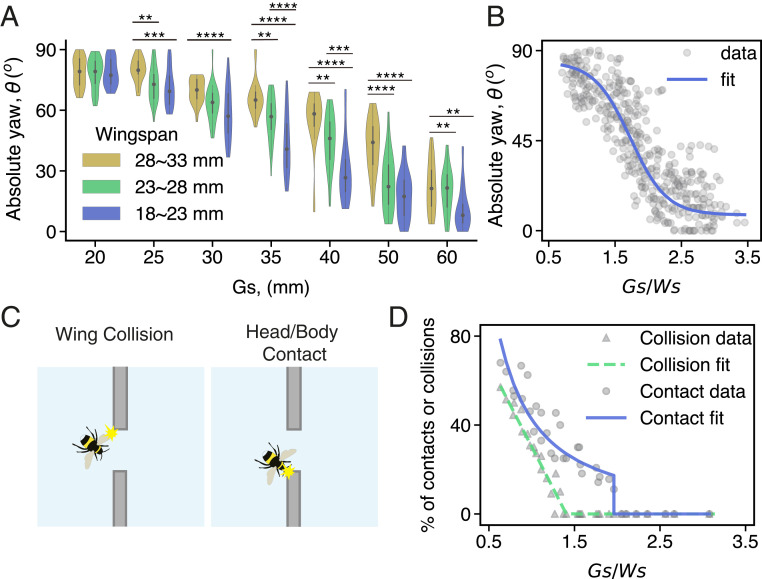Fig. 3.
Bumblebees reorient themselves to pass through narrow gaps. (A) Absolute yaw angle of bees at the midpoint of the gap, observed in bees of different wingspans passing through gaps of increasing width (refer to SI Appendix, Tables S8–S11 for statistics) (B) Scatterplot (n = 400 flights) showing the absolute yaw angle of bees at the midpoint of the gap relative to normalized gap size [gap size divided by wingspan; sigmoidal fit: yaw = 85.22+(−74.88/(1 + 101.7−(Gs/Ws)) × 1.6), R2 = 0.82]. (C) Schematic illustrations of a bee whose wing is colliding with the edge (Left) or who is making contact with the edge (Right) while passing through the gap. Contact was considered to have occurred when any part of the bee’s body (including limbs, head, or antennae, but excluding the wings) touched the edge of the gap. (D) Proportion of flights during which bees’ wings collided with the edges, and during which bees’ bodies made contact with the edges of the gap, as a function of normalized gap size (gap size divided by wingspan). Bees of different wingspans were first segmented into bins of 3 mm between 18 and 33 mm, and the proportion of collisions or contacts was calculated with respect to the number of flights within each wingspan bin and normalized gap size. Power relation between % of flights with contacts CO = 42.61×(Gs/Ws)−1.336, R2 = 0.86, linear relation between % of flights of with collisions CL = −74.76×(Gs/Ws) + 105, R2 = 0.93. See SI Appendix, Table S1 for dimensional representation of collisions and contacts. The number of flights recorded, contacts, and collisions for different gap sizes for bees with different wingspans are given in SI Appendix, Table S1.

